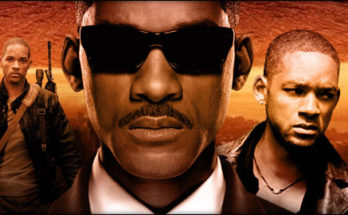Enter the Void (Gaspar Noé, 2010) – Gaspar Noé lets his freak flag fly in Enter the Void, his DMT-tripping, POV-camera epic of indulgence. Whether you dismiss it as trash or praise it as genius, there is no denying that Noé is working on an entirely original level. After seeing the film at Cannes in 2009, Manohla Dargis said, “This is the work of an artist who’s trying to show us something we haven’t seen before.” That is an absolutely true statement, and to watch Enter the Void is to marvel at Noé’s formal experimentation. What he has to say is adolescent and exploitative, but there is something thrilling about watching him take such huge risks.
Noé seems to have an obsession with dark underworld club scene situations that lead to horrific violence. He explores very similar territory in Irreversible, with a similar sort of roving, eye-level camera. Yet, compared to Enter the Void, the earlier film is a positive delight to sit through. Both films punish the viewer with shocking sex and violence, but Enter the Void entirely forgets about its audience.
Things actually begin promisingly enough, as we follow our protagonist Oscar (Nathaniel Brown) as he smokes DMT, heads out to a club to make a drug deal, and gets shot by police resisting arrest. We experience all this from his literal POV, and it is exciting to see how Noé moves his camera. Indeed, the best thing about the entire film is Noé’s camera, which is never still and constantly surprising. (He has admitted that he did not direct any of the actors in the film, but that they directed themselves.) Once Oscar dies, we float out of his body and upward. The conceit (the film is exceedingly conceptual in nature) is that his consciousness has left his body and remains present on the earth, observing but not able to interact with the living.
Let’s back up a bit. Oscar became a drug dealer so he could earn enough money to fly his sister (Paz de la Huerta) to Tokyo to be reunited with him. When she arrived she became a stripper and started partying with a lot of shady people, and who knows, maybe one of them ratted out her brother. She was originally separated from her brother when they were children, after witnessing the horrific accidental deaths of their parents, and being taken to different foster homes. We experience all of this through flashback, which is supposedly still being experienced by the dead and/or tripping spirit of Oscar. Noé, in these early flashback scenes employs visual-matching cuts which begin to set up the narrative themes. The feeling expressed is an overwhelming fear of abandonment and an obsessive attachment to mother-figures, and to their breasts in particular.
But just as Noé starts to tell a real story, he stops in his tracks, and proceeds to spend the last couple hours of running time floating between buildings, hovering around streetlights, repeating (yet not expanding) the themes mentioned above, and mostly observing his sister as she fucks her way through the guilt and pain she feels over her brother’s death. Far too much time (nearly three hours in the cut I saw) is spent on barely a hint of a plot. (We don’t care at all about the police investigation, nor about Oscar’s friend the street philosopher, nor about most of the many strands we observe.) The way he refuses to use straight cuts for most of the film makes it drag interminably, and, worse, each graphically-stylized transition raises expectations that we’re entering the final scene. After being jerked around for hours, this would wear on anybody’s patience.
There isn’t a single frame that Noé doesn’t inflect with layers and layers of effects. Given his intention of recreating the experience of a hallucinogenic trip, it’s a bit obvious to choose Tokyo, with its fluorescent lights and strange foreignness to Americans, as the film’s setting. Soon Noé’s camera swoops over rooftops, through apartment walls, into the backs of people’s heads, into fires and lights and urns. Noé’s choices grow increasingly absurd as we find ourselves entering a bullethole, observing a realistic abortion, and later witnessing sexual congress from inside a vagina. Mostly, though, the camera hovers directly behind the protagonist’s head. His is a literal interpretation of an out-of-body experience, which betrays what some may call a superficial understanding of profound catharsis. I think his literal approach is commendable for the technical gauntlet Noé has set up for himself, a gauntlet which he stubbornly chooses to traverse. Unfortunately, we viewers have to go on the exploration, too, and Noé’s mind is too adolescent and ultimately shallow to be worth exploring.
If you make it through to the final reel, you will be rewarded with two exciting, highly expressive sequences. Noé uses miniature models to create a bizarre, trippy flyover through Tokyo. Then we enter the Love Hotel and observe various forms of copulation, digitally enhanced, of course. His editing and camera tricks and digital manipulation create experiences that push the possibilities of cinematic expression and expand the film language of drug-induced subjective states. The film world needs more risk-takers like Noé, to inspire others with their forward-thinking ideas. It is for this reason that I was thrilled by Enter the Void even as I felt assaulted (and confused, and bored) by it. I’m not about to recommend the film, but I also don’t want to stick my nose up at it. In fact, I wish more people were willing to take the (small) risk that they might be bored or shocked by a film, on the off chance they might stumble onto something genius, something, perhaps, they never imagined possible.



